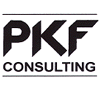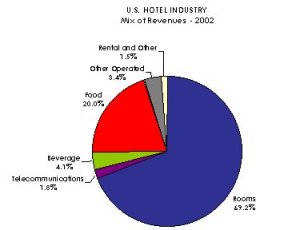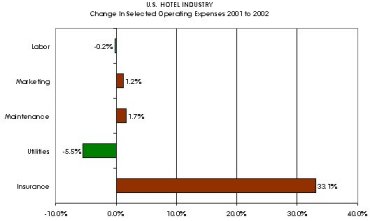 |
 |
|
|
 |
 |
|
|
| By: Robert Mandelbaum, July 2003
The average U.S. hotel suffered a second year of declining profits in 2002, which marks the only consecutive year-over-year decrease in hotel profitability since 1982-1983. The operating profit for the average U.S. hotel dropped 9.6 percent in 2002, after already declining by 19.4 percent in 2001. These results come from the 2003 edition of the Trends in the Hotel Industry � USA survey, an annual review of U.S. hotel operations conducted since 1935 by PKF Consulting and The Hospitality Research Group (HRG). The 2003 Trends report draws upon year-end 2002 financial statements from 4,000 hotels across the country. Profits are defined as revenues less operating expenses, management fees, property taxes, and insurance. Therefore, decreases in profit can be attributed to a decline in revenues, an increase in expenses, or both. Hotel revenues were depressed in 2002 for several reasons, including a sluggish economy, a stigma on travel stemming from the September 11 terrorist attacks, and fears of a war in the Middle East. Due to a volatile operating environment, total revenue fell by 4 percent for an average U.S. hotel. All revenue outlets, including rooms, food & beverage, telecommunications, and other operated departments, experienced decreases in revenue, but the mix of revenue sources changed little from 2001. New Expense Cuts Hard To Find After feeling the dramatic negative effects of the September 11 terrorist attacks and recession in 2001, hotel managers cut their costs dramatically. In 2001, total operating expenses declined 5.3 percent, including a 6.6 percent cut in labor costs. With most of the expense cutting done in 2001, there was little padding left in the 2002 operating budgets of U.S. hotels. Therefore, hotel managers were challenged to find additional cost saving measures in 2002. In response to the 4.0 percent decline in total revenue in 2002, hotel managers were only able to muster a 1.8 percent cut in expenses. One reason for the difficulty in finding expenses to cut was occupancy,
which only decreased by 0.5 points in 2002. Hotel managers needed to spend
the associated variable expenses required to continue serving their guest
base, which did not significantly decline over 2002. The most observable
example of a variable hotel expense is labor costs. Labor costs constitute
43.7 cents of every dollar spent to operate a hotel. Historically, hotel
managers have made deep cuts in payroll in response to declines in revenue.
However, in 2002, relatively stable occupancy, combined with a desire to
preserve guest service, resulted in a decline of only 0.2 percent in hotel
labor costs.

Source: The Hospitality Research Group of PKF Consulting Some Expenses Go Up Further evidence of hotel managers� efforts to attract new customers, while satisfying their existing guests, are the increases in both maintenance and marketing expenditures. In 2002, hotel managers spent an average of 1.2 percent more to market their hotels than they did in 2001. This figure includes all on-site marketing efforts, but does not include any fees paid to franchise organizations or referral services. Despite declining revenues, U.S. hotels did increase the amount they spent to maintain the hotel building, furniture, fixtures, and equipment. Property operations and maintenance expenditures increased 1.7 percent in 2002. However, the single largest increase in hotel operating costs during
2002 was insurance. The average U.S. hotel had to spend 33.1 percent more
in 2002 in order to insure the contents and structure of their building,
as well as business liability. This comes on the heels of an 18.9 percent
increase in 2001. This is one of the biggest increases in any one individual
expense item that has occurred in the 67 years that the annual Trends
survey
has been published.

Source: The Hospitality Research Group of PKF Consulting Still Not Losing Money While profits have fallen for hotels, the average 2002 profit margin for the properties in the Trends sample was 27.5 percent. This is nearly two full percentage points greater than the 25.6 percent average margin achieved by U.S. hotels from 1960 through 2001. While hotel owners and operators are losing ground in the current economic, political, and travel environment, the majority are not actually losing money. To purchase a copy of the 2003 edition of Trends in the Hotel Industry, visit the HRG website at www.hrgonline.com Robert Mandelbaum is the Director of Research Information Services for The Hospitality Research Group of PKF Consulting |
|
Robert Mandelbaum PKF Consulting 3340 Peachtree Road Suite 580 Atlanta, GA 30326 phone (404) 842-1150 [email protected] |